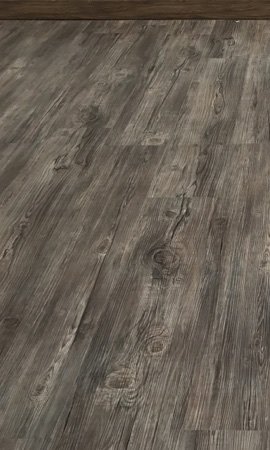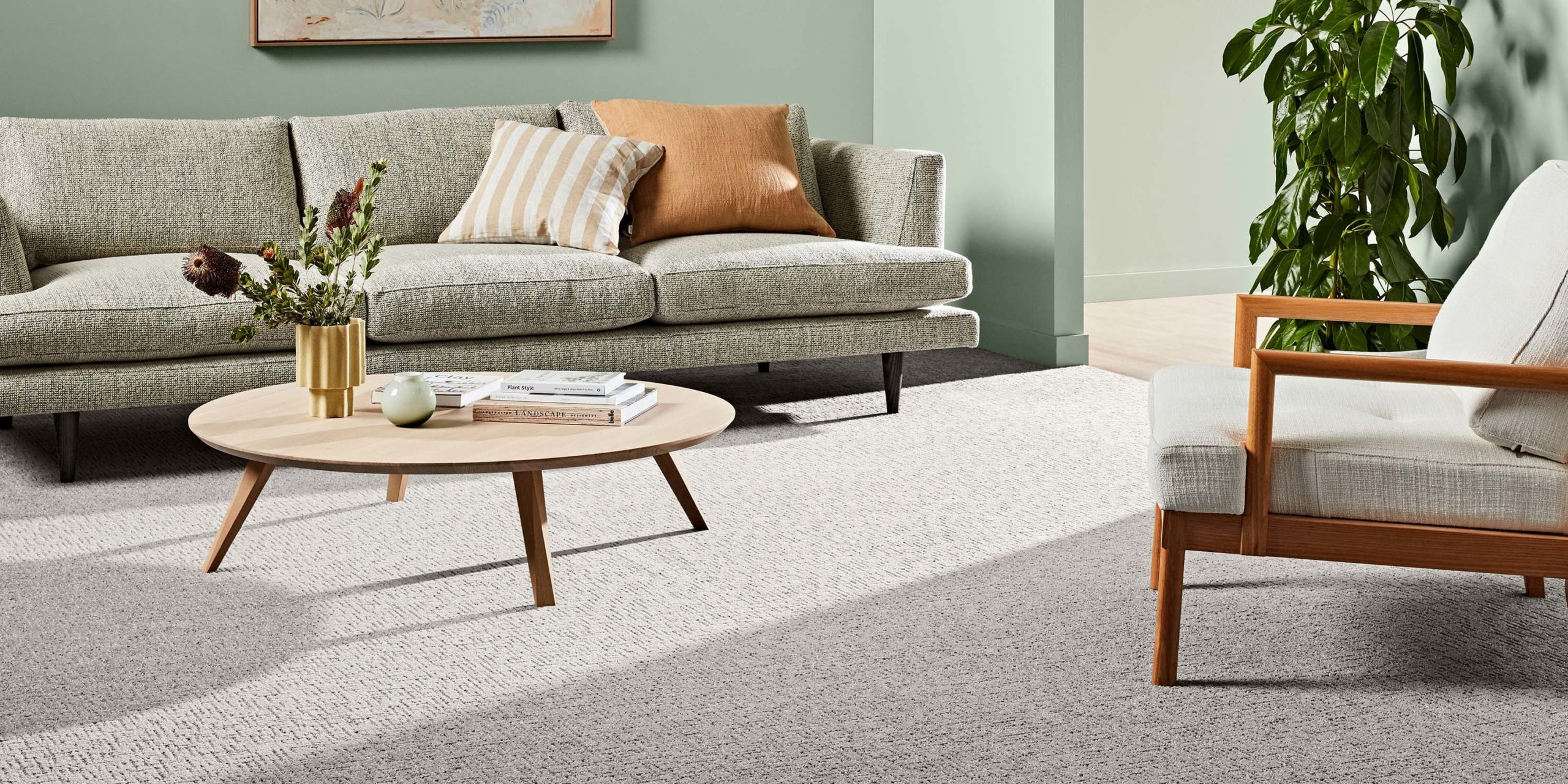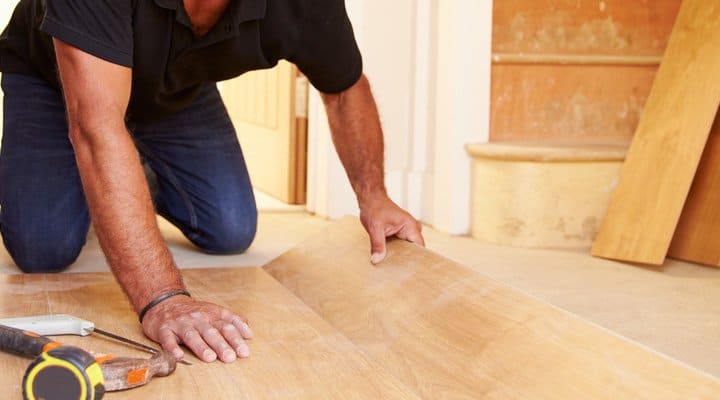

10 May Ultimate Guide to Laminate Flooring
What is laminate flooring?
If you’re looking to choose your next floor, laminate flooring is an affordable option that has become increasingly popular over the past few years.
As its name suggests, laminate floorboards are composed of several layers that have been bonded together:
- Top Protective Layer – this tough top coating gives laminate flooring its durability and its matte or glossy finish. Usually made of a substance such as aluminium oxide, the hard protective layer is also UV-resistant, reducing any risk that the flooring can fade over time.
- Print Layer – this layer gives the laminate flooring its stylish colouring and texture. Usually infused with resin, the print layer uses advanced high-definition printing and texturing technology to portray a multitude of smart and modern designs.
- Core or Substrate Layer – the core is made of a particleboard such as HDF, which consists of wood waste that is pressed with a resin or wax. This gives laminate flooring its sturdiness, whilst still being economical. Particleboard also resists humidity, which helps prevent any peeling or warping that can occur on other floor surfaces such as timber.
- Bottom Layer – the bottom layer of laminate flooring is usually composed of a polymer such as melamine, giving added strength and moisture resistance. This helps prevent any swelling or warping that occurs from any water that accumulates below the floor.
- Underlayment – although not strictly part of laminate floorboards, underlayment is used as a barrier between laminate flooring and the subfloor below. This helps mask any bumps or other imperfections in the subfloor, provides thermal insulation, and suppresses noise.
In this article, we’ll take a closer look at laminate flooring by comparing it to other flooring alternatives, and give some tips that you should look out for when choosing your next laminate floor.
What are the pros and cons of laminate flooring compared to other options?
Value
One of the primary benefits of laminate flooring is affordability, making it a great way to install a beautiful floor at an affordable price point. Laminate flooring is cheaper than alternatives such as cork and timber because it can be installed on top of your existing floor, which means that you don’t have to spend as much on preparation. In addition, newer laminate floorboards use a click mechanism that locks together during installation, making it cheaper and easier to install.
In addition, most quality laminate floors add value to a home and, for most people, are difficult to distinguish from real timber floors. This puts it amongst other valuable flooring types like tiles, timber flooring and oak flooring (and way ahead of grime-trapping carpet), which is particularly important if you’re looking to sell your house.
Style & Design
Because the print layer of laminate floors can be easily customised, the range of styles and designs for laminate flooring is much broader than alternatives to timber or bamboo flooring, and is probably only matched by hybrid and vinyl flooring. In fact, FloorVenue has over 80 styles of laminate flooring available for your home, making it easier for you to choose one that fits your tastes.
Recent technological developments in laminate flooring, such as micro bevels and deeper textures, have allowed laminate flooring to very realistically imitate surfaces such as timber, brick, and even metal. In addition, the hard UV-resistant topcoat found on laminate flooring means that it doesn’t fade like timber or bamboo, and can maintain its style and colour for decades.
However, since laminate flooring is created from printed designs, it may be subject to pattern repetition, where different floorboards are printed with the exact same pattern too frequently. To help prevent this from being noticeable and give your floorboards a more natural look, you can stagger the boards and patterns during installation.
Comfort
Because laminate floors are thinner and usually installed as a floating floor, they can feel slightly less solid underfoot than other types of flooring. However, this is usually mitigated by the use of a foam underlayment, which also has the benefit of feeling softer and springier underfoot than tile or timber, but not as much as cork or carpet.
Laminate flooring with a glossy finish can also be slippery (almost as much as tiles), although most modern laminate floors do have coatings and surface textures to prevent slippage. If you need grippier flooring for your children or the elderly, we would recommend selecting a matte or embossed finish with your laminate flooring.
Health & Wellness
Laminate flooring is also generally a good option for allergy sufferers, as the interlocking floorboards leave no gap for mould or other allergens to live. This means that any grime can be simply wiped away with a damp mop or a broom, unlike surfaces such as carpet, which can trap nasties within its fibres.
However, you should note that low-quality laminate flooring can emit chemicals that can cause irritation, so it might not be a good option for people with asthma or other respiratory issues.
Whilst uncommon, be sure to check for test certificates on emissions levels from suppliers. At FloorVenue, we only stock laminate flooring that has the lowest amount of emissions and meets the most stringent emission ratings (E1).


Durability
Laminate flooring is highly durable, as the protective topcoat is very scratch-resistant. This makes it suitable for high-traffic areas where surfaces such as timber and bamboo can get easily scratched and look unsightly.
However, laminate flooring generally doesn’t like having water on it for long periods of time, as this can cause it to expand and bubble up. A better option for wet areas like the bathroom, laundry or kitchen is tiles.
When it comes to cleaning, laminate flooring only requires occasional vacuuming or sweeping to stay fresh. Unlike timber, it doesn’t need any waxing or polishing, although laminate flooring also can’t be resurfaced to revitalise the look of your floors.
What should I look out for when choosing laminate flooring?
Cost
Whilst laminate flooring is generally an affordable alternative, make sure to take into account the costs of preparation (for example, whether you need to remove any carpet), as well as tools and supplies.
When you’re choosing which brand and style of laminate flooring to use in your home, make sure to do your research! The quality and durability of laminate flooring vary tremendously from the lower to the upper end, so pay particular attention to the quality of the photographic layer and whether the laminate is suitable for the traffic and usage of the room you are placing it in. Cheaper laminate floors also generally use more chemicals and waste material, which can harm your health.
Design
The look you’re going for in your room will drastically affect the colour and style of laminate flooring you should choose. Smaller rooms generally like having lighter colours to bring out a sense of spaciousness, and larger rooms can use darker finishes to add a sense of snugness. You should also consider whether the colours and design of the laminate flooring will match the furniture and other decor in your room.
Thickness
The thickness of laminate flooring has a large impact on how it feels underfoot and the sound created when walked upon.
14mm laminate flooring is the top of the spectrum – it’s a premium option that looks and feels realistic, and provides optimal comfort and durability. Below this are the 12mm, 10mm and 8mm thicknesses, which feel less solid but are also more affordable.
We should note that the wear topcoat and the print layer are generally unaffected by the overall thickness of the flooring, so make sure you pay attention to the particular style you will be using. You can also increase the thickness by using an underlayment (discussed below), which is particularly useful if there are height differences between different floors in your home.
Underlayment
Underlayment is mandatory padding under the laminate flooring that helps the laminate flooring connect in a cushioned way with the sub-floor and feel more comfortable when stepped upon. Some types of laminate flooring come with pre-attached underlay, although underlay can also be purchased separately.
In Sydney apartment blocks and units, only certified acoustic underlay that prevents noise transmission is allowed. According to Australian Standard AS 1884, laminate flooring installations must also ensure the subfloor is clean, dry, and level (no more than 4mm variance over 2 metres) before laying underlayment and boards.
Some other reasons why you might want underlayment might include smoothing out any bumps and cracks in your existing subfloor (on which the laminate flooring is laid), to stop moisture seeping in from below and causing the laminate to lift, and to absorb sound. However, underlayment can cause the laminate to sound ‘hollow’, and is an added cost if you want to install the flooring quickly and cheaply.
Scratch resistance
Scratch resistance in laminate flooring is measured by the AC rating system. To ensure compliance, Australian Standard AS 4266 specifies testing methods for abrasion, impact, and moisture resistance in laminate and other resilient flooring products
AC1 is used for light traffic areas such as closets and rarely used rooms, and we wouldn’t recommend this for general household use.
AC2 and AC3 are common laminate flooring abrasion ratings, as they give the best balance between durability and affordability. AC3, in particular, can be used in higher-traffic areas such as the living room and even for light commercial use, such as in offices.
AC4 and above are designed for commercial use in places such as shopping malls, but these ratings are still definitely suitable for homes. However, they will be more expensive and may not be necessary for homes.
Supplier
The supplier that you choose for our laminate flooring is especially important if you want to rely on warranty and post-installation support. Make sure to buy from a reputable and long-established supplier to ensure that you get what you pay for, and have knowledgeable staff to help you with any questions you may have.
Want to Learn More About Laminate Flooring?
Need help choosing? We’ve supplied and installed laminate flooring to Sydney homes for almost 2 decades, and we’d love to help you, too.
Just give us a call on 9750 5095 if you’re based in Sydney (Belfield Office) and 9831 7621 if you’re based in Sydney West (Blacktown Office).




























